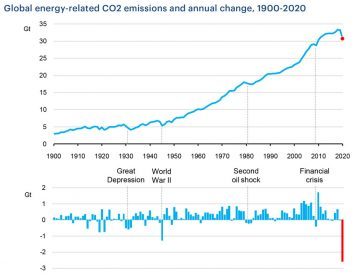Dilworth et al in American Scientist:
 It is perhaps no surprise that such changes in the behavior of human beings, labeled a hyperkeystone species by biologists Boris Worm and Robert Paine, would be detectable in the natural world. Enforced human immobility and the shutdown of carbon intensive industrial operations have silenced human noise and improved air quality; emboldened wildlife to openly roam cities and giant pandas to mate in shuttered zoos; and, after setting new highs in each of the past two years, greenhouse gas emissions are now projected by the International Energy Agency (IEA) to drop by 8 percent this year.
It is perhaps no surprise that such changes in the behavior of human beings, labeled a hyperkeystone species by biologists Boris Worm and Robert Paine, would be detectable in the natural world. Enforced human immobility and the shutdown of carbon intensive industrial operations have silenced human noise and improved air quality; emboldened wildlife to openly roam cities and giant pandas to mate in shuttered zoos; and, after setting new highs in each of the past two years, greenhouse gas emissions are now projected by the International Energy Agency (IEA) to drop by 8 percent this year.
Even though these outcomes show nature’s resilience, they are accompanied by the loss of many human lives. Violent economic and social upheaval are not prerequisites for the mitigation of climate change. Rather, our work on sustainability and climate change is motivated by a desire to improve the human condition through the design of a carbon-neutral circular economy that simultaneously builds economic, natural, and social capital. We do not want to confuse the consequences of a temporary pause in consumer economies with the structural changes needed to avoid the most devastating effects of climate change. That goal requires a similar reduction in greenhouse gas emissions (about 7.6 percent) every year between 2020 and 2030, and that reduction must be accompanied by equally ambitious efforts to promote social justice and equity. UN Secretary General António Guterres could have been discussing COVID-19 when he pointed out that solutions to the climate crisis that do not benefit everybody will lead to the “survival of the richest.”
More here.
